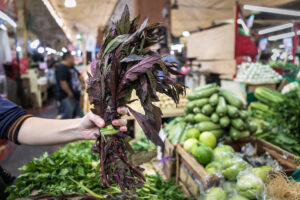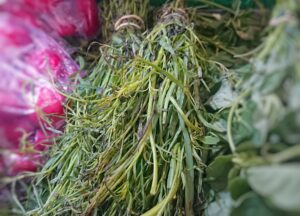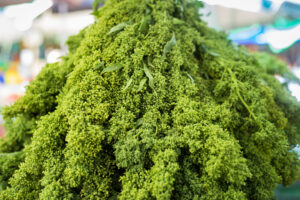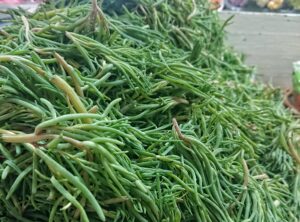More than 350 plants for cooking: the world of quelites

Perhaps you have heard of the most representative ingredients in Mexican cuisine which are corn, chili and beans; that together make up the triad that is the basis for a wide variety of delicious dishes. However, what would the kitchens of the world be without their accessories? Those little ingredients that give flavor to meals and life itself.
Well, in Mexico we have more than 350 types of plants, which we can use as seasonings, as garnishes, accompaniments, and even as succulent main dishes. Their use is so varied that we can find them in soups, salads, tamales, sauces, fillings and even in aguas frescas. These are quelites – wonderful plants that grow almost anywhere there is a little shade and the amount of water necessary for their growth and that, unfortunately, are often considered weeds, either due to a lack of knowledge or because their commercialization does not generate a large economic income compared to other higher-performance ingredients.
The word quelite comes from the Nahuatl quilitl which means vegetable or tender edible plant. Within its classification we find a great variety of plants and even various parts of these plants ranging from stems, leaves, buds and even flowers. It is important to mention that this is not a contemporary botanical classification, rather it is a way of grouping ingredients by their use that dates back to pre-Hispanic times.
Mentioning each quelite with its characteristics and gastronomic uses is a topic that can fill entire books, therefore, we are only including a small list of the most common quelites that can be found in Mexican markets.
Epazote
The most common is green, although it can also be found in violet tones. It has an intense, slightly minty aroma, with aniseed and very herbal notes. It is generally used to enhance the flavor of foods so it is added in small quantities.
Purslane
Both the tender stem and the leaves, which are small and slightly fleshy, are consumed. It can be consumed in its raw form in salads, although it is more common to cook them in green sauce with fresh chilies and tomatillos accompanying beef or chicken. Its flavor has slight citrus tones.
Pápalo
The king of traditional taquerias, it can be found in easy-to-reach small containers of water for anyone who wants to add a few leaves to their taco to create an explosion of flavor. It has notes reminiscent of cilantro with a mix of basil and mint.
Pipitza
Its leaves are elongated and flat and have an intense green color. It has a very concentrated herbal flavor reminiscent of a mixture of cilantro and parsley, which is why it is used in small quantities to enhance the flavor of foods.
Huazontles
It is the plant from which amaranth originates, and is identified by its intense green color and the grouping of small bouquets that contain the seeds. It is generally consumed well-cooked as a main dish filled with cheese, coated and topped with tomato broth.
Romeritos
This is a seasonal quelite that can be found mostly during the winter season and into early spring. Its elongated, fleshy leaves should be boiled slightly before adding to any stew. It is very common to cook them with mole and dried shrimp for Christmas and Lent.
The importance of quelites is not only because of their gastronomic use, but also several of them have a record of medicinal uses, they are rich in fiber, vitamins and minerals such as iron and calcium. In addition, they provide the soil with moisture and organic matter that serves as a nutrient for primary crops.
Remember that each state in Mexico, just as they have their own dishes, also have their own ingredients, so there may be quelites that you can only find in a certain area.
Therefore, we invite you to immerse yourself in the extensive world of quelites and try them every time you have the opportunity. Join us in the tour Journey Through La Merced Market for a small group visit that will allow you to taste a curated list of Mexican food and learn more about native ingredientes.





